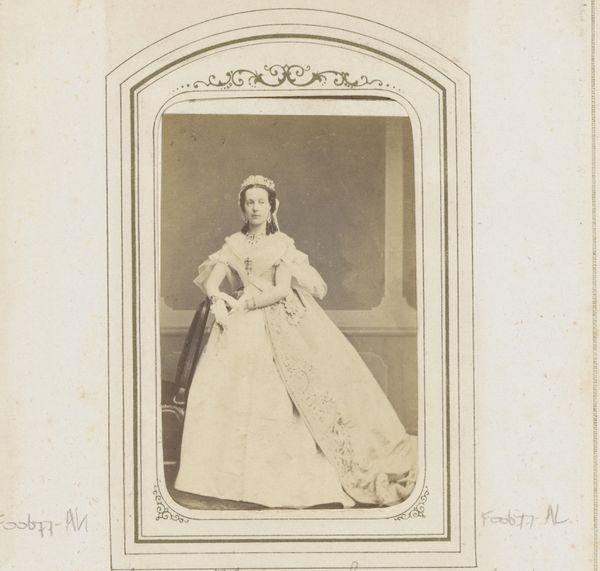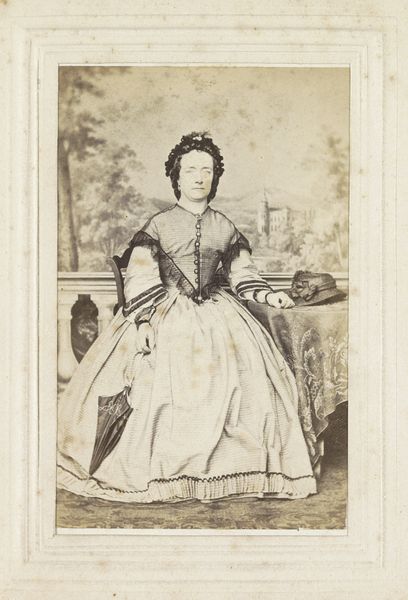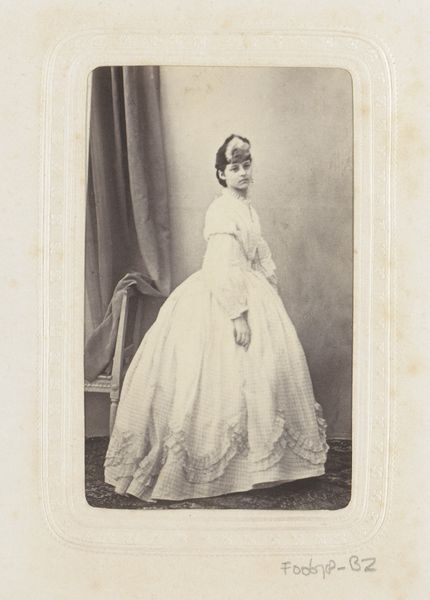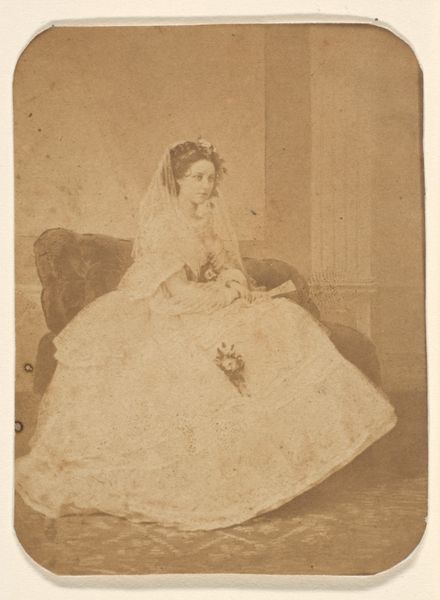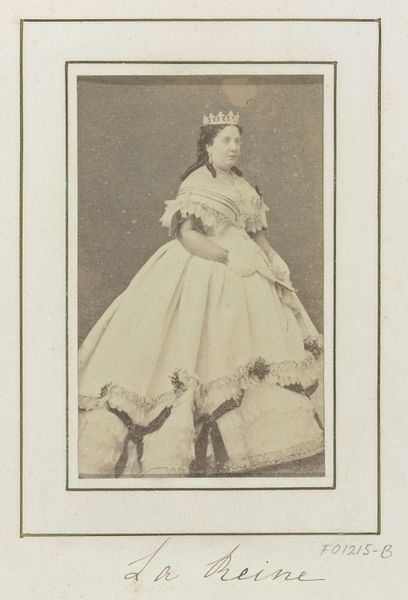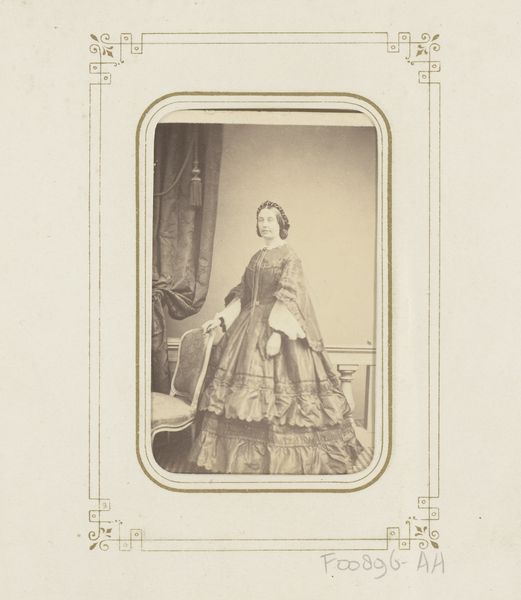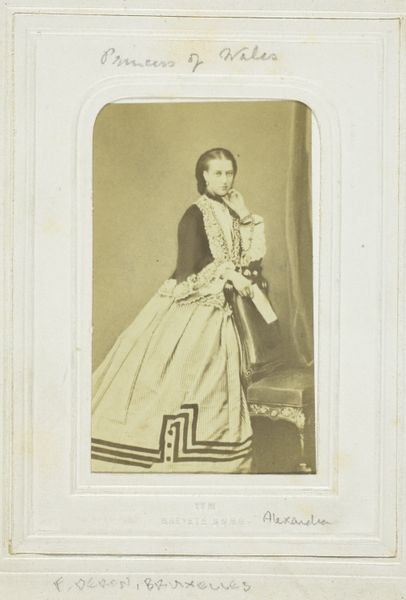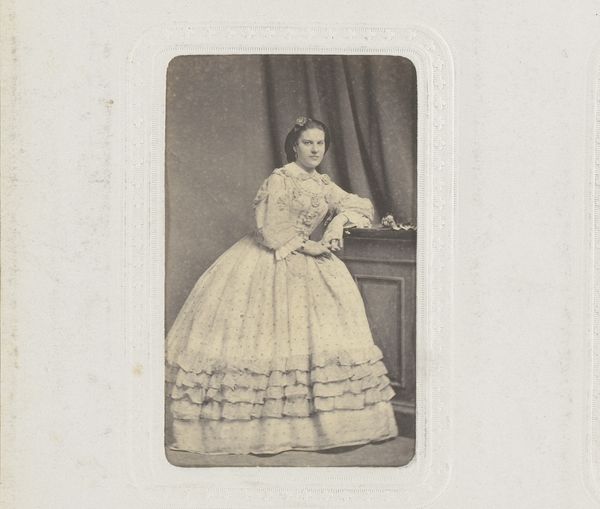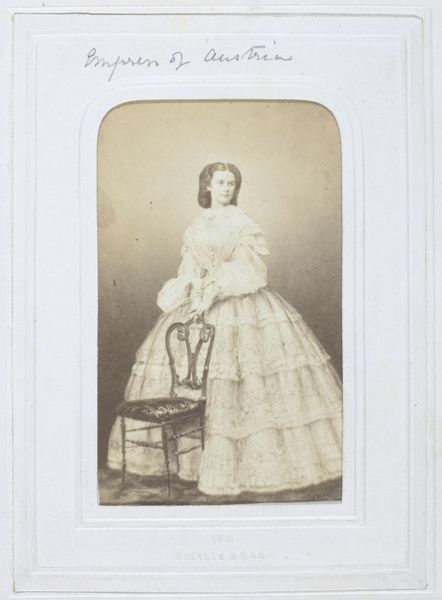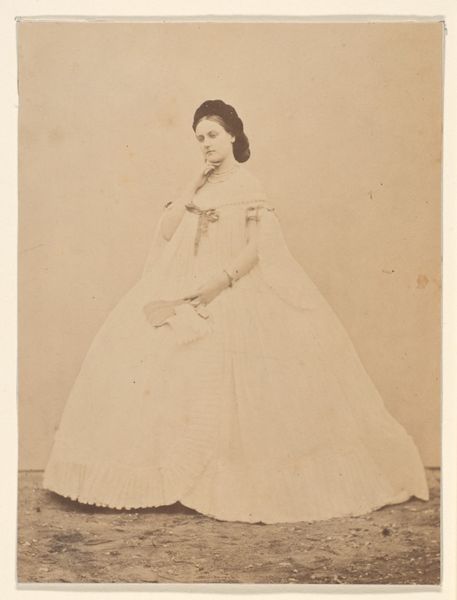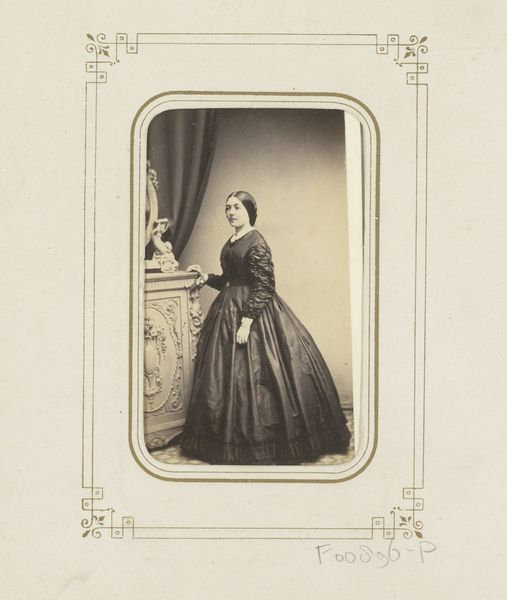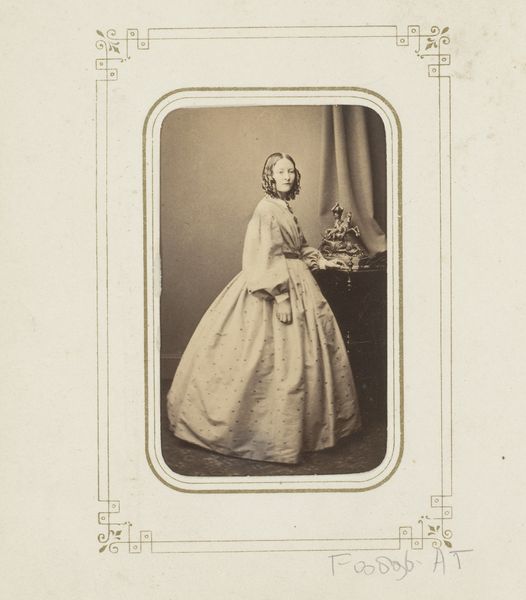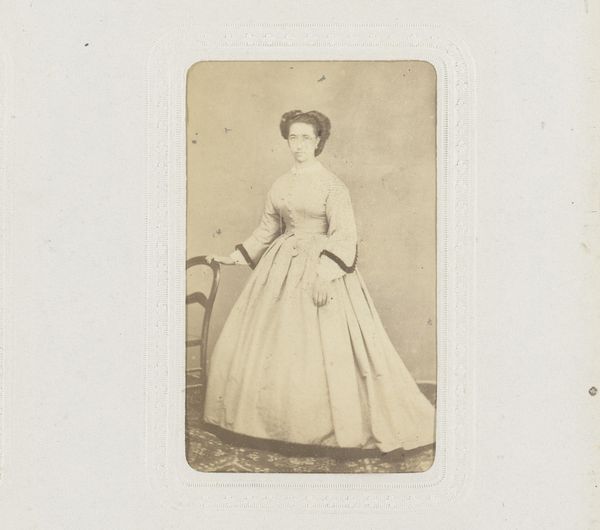
photography
#
portrait
#
photography
#
historical fashion
#
19th century
Dimensions: height 82 mm, width 51 mm
Copyright: Rijks Museum: Open Domain
Curator: Welcome. Here we have a photograph, "Portret van Charlotte van België," created around 1862. The figure is quite striking. What is your initial reaction? Editor: It’s immediately arresting—almost ethereal. The sepia tones lend it an otherworldly quality. Her gown practically floats, and her gaze is steady, if a little melancholy. There's an undeniable air of…performance, of embodying an idealized feminine role. Curator: Indeed. Charlotte was a fascinating figure. This portrait reflects her public persona during a period when photography was becoming a significant tool for projecting power and crafting celebrity. Editor: And solidifying class structures and race hierarchy. Look at the meticulous detail in the ruffles and lace, showcasing extreme wealth and power while hinting at fragility. Curator: Quite right. While ostensibly capturing reality, photographs like this presented a curated reality. Charlotte was not merely posing; she was embodying a concept of monarchy and European identity meant for wide circulation. The circulation of photographs and their intended meaning were carefully controlled, so, how was this specific portrait used? What were its intended effects? What sort of visibility does the photographic medium afford Charlotte and her Belgian identity? Editor: It makes me wonder what wasn't captured. How were marginalized communities impacted by the solidification of imperial ideas in images like these? We see Charlotte, idealized and remote, but what about the perspectives, for instance, of her colonial subjects in Mexico, or how this image justified Belgium's extraction of resources from Congo? It demands us to explore what and who lies outside the frame, silenced and erased by such dominant and propagandist representations. Curator: It reminds us that art, even photography, operates within complex systems of power. Thinking about the effects and influence this image generated encourages dialogue around representation, power and resistance, making it much more than just a portrait of a princess. Editor: Precisely, an artifact that compels us to ask probing questions about representation, then and now, so, thank you for providing that. Curator: A necessary and crucial intervention that really illuminates its historical meaning, so thank you.
Comments
No comments
Be the first to comment and join the conversation on the ultimate creative platform.
